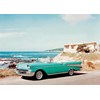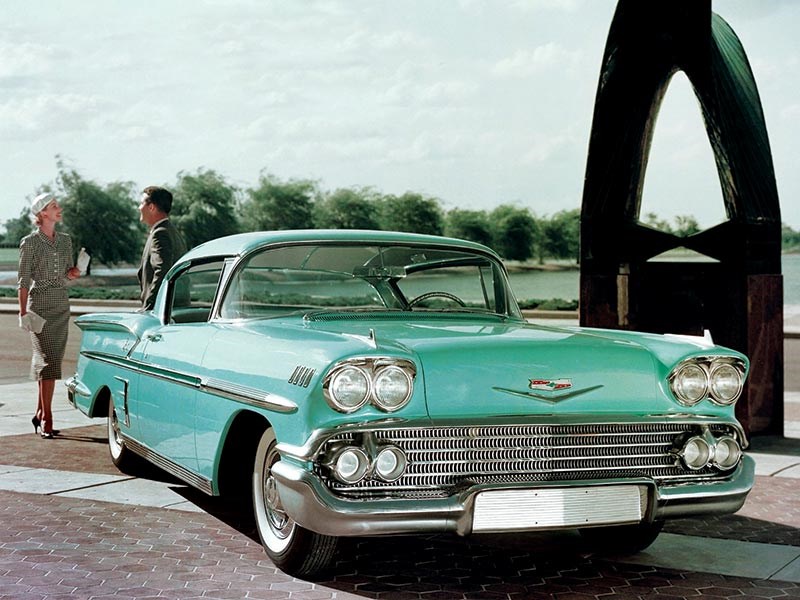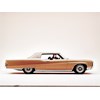2014 USA Buyers Guide - Pt.1
 2014 USA Buyers Guide - Pt.1
2014 USA Buyers Guide - Pt.1

 2014 USA Buyers Guide - Pt.1
2014 USA Buyers Guide - Pt.1

 2014 USA Buyers Guide - Pt.1
2014 USA Buyers Guide - Pt.1


|
|
2014 USA Buyers Guide - Pt.1
|

|
|
2014 USA Buyers Guide - Pt.1
|

|
|
2014 USA Buyers Guide - Pt.1
|
Lower exchange rates may have put the brake on imports, but it's still a good time to buy an American car...

|
|
2014 USA Buyers Guide - Pt.1
|
USA BUYER'S GUIDE 2014
Australia’s automotive environment is set for huge change and among the reforms is a predicted shift back to US-sourced cars. With the Falcon virtually dead and rear-wheel-drive Holdens also doomed, cars from America’s two biggest manufacturers seem certain to come to us via Korea, Thailand and perhaps Flat Rock, Michigan.
More than a decade ago, Ford tried to convince Australians that factory-approved Mustangs could sell here for $90,000 and failed miserably. This time, so the publicity material claims, the cars will be available from under $50,000 and the range – horror – will include a (turbo) four-cylinder.
As expected, the $US exchange rate has crashed back to well below parity and the attraction of going laptop-shopping for a car has diminished. However, what recent years have delivered is a glut of certain US models, prompting significant losses for those who need to sell similar cars that were bought when a US dollar cost around $A1.30.
Looking at the situation of older Mustangs, Camaros and other recognisable US models, the picture is less attractive than it was a couple of years back.
Pre-1973 Corvettes, again under the influence of baby-boomers, remain relatively expensive, but then came the ‘plastic bumper’ cars and prices collapsed to less than $25,000.
Big convertibles from almost any manufacturer you care to name do better than hardtops or sedans yet remain relatively cheap. A good 1960s Cadillac or Buick with power-operated everything including the top will likely cost around $25,000. Even Class A collector cars like the early Pontiac GTO soft-top still sit at just over $50,000.
US classic car auctions remain a fascinating spectator sport and document the variety of cars available over there at relatively affordable prices.
Considering that $80,000 to $100,000 is still being paid for quality Australian-made performance cars, a realm of possibilities awaits anyone with a trans-Pacific airline ticket or the fortitude to be a phone bidder.
Shelby and Boss 302 Mustangs, ‘409’ Chevrolet SS Hardtops, Chrysler 300s, 427 Corvettes and other highly regarded models can be bought from the States for way less than six figures, but make sure you check import costs and your Luxury Car Tax liability before placing a bid.
Vintage models including Model A Fords, Chevrolets, Dodges and slightly more exotic brands like Buick and Studebaker are undergoing a revival of interest. They might not be the kind of car you’d take on an early morning thrash though the countryside, but those into car club displays and social touring will find that $20,000 buys something usable and reasonably reliable.
Cliff Chambers
February 2014
**********
How to read Market Reviews
Our market reviews focus on market movements for various vehicles during the past year to provide guidance on realistic pricing for available models.
The average values shown are based on surveys of cars offered for private sale and through licensed dealers in metro markets within Australia and on the internet.
The number in brackets following each average price displays the number of cars surveyed. An average based on fewer than 20 sales is not necessarily representative of the market for that specific model.
When I/D (Insufficient Data) or N/S (None Surveyed) is displayed, no cars of that type were sold in the survey period.
How to read Price Charts
The values shown in the charts are based on advertised asking prices and reported sales from all parts of Australia, using data supplied by dealers, private purchasers and auction houses. In most cases, the values quoted reflect the prices being achieved by vehicles being sold by private vendors.
Where a model is rarely offered on the Australian market, estimates are based on overseas value guides and auction results.
Careful reading of the Condition Category descriptions is vital to effective use of the Price Charts.
Note: Price tracker boxes indicate price movements of that model since 1998.
> Read Part 2: Market Review here
CONDITION 1
BODY
Should be free of dents, rust or obvious repairs. Minor stone chips are permissible, major blemishes or mis-matched paintwork are not. Brightwork must be complete and show no evidence of damage.
INTERIOR
Seats should be covered in original-pattern material free of rips or other damage, floor covering complete, clean and of correct material, headlining clean. Dash – especially where timber or veneer is used – should be free of cracks or discolouration.
ENGINE BAY
Clean with no water, oil, fuel or battery leaks. Hoses and belts need to be in sound condition. The correct engine or one which was optional to the model should be fitted. Authentic components are a must if the car is to be upgraded to concours standard.
UNDERBODY
No dents or damage to underseal, exhaust system complete and undamaged, no oil leaks from the differential, transmission or shock absorbers. All suspension components should be in good working order.
WHEELS & TYRES
Original wheels with correct hubcaps or aftermarket wheels in keeping with vehicle style and age should be fitted. Tyres need to be correct size and speed rating, with at least 50 percent original tread.
CONDITION 2
BODY
No serious rust or large areas of body filler evident. Minor bubbling in non-structural areas permissible. Paint should be good quality but may show evidence of repairs, chips and scratches. Brightwork should be generally good, although areas of dulled or scratched chrome are likely.
INTERIOR
Seats may have been re-covered but should be in good general condition. If the trim is original, areas of wear and broken stitching is likely. Floor coverings should be complete, carpets and hoodlining preferably to original pattern. Cleaning may be required.
ENGINE BAY
Engine should be of original type although original engine is unlikely. No major fluid leaks or discolouration. Cleaning will be required.
UNDERBODY
No serious damage, however scrapes and chipping likely. Minor oil leaks are common, exhaust should be complete and free from holes or burning around joints. Suspension components such as kingpins, ball joints and shock absorbers need to be roadworthy.
WHEELS & TYRES
Wheels should be the original rims or legal-sized aftermarket units. Tyres should have at least legal tread depth left.
CONDITION 3
BODY
Moderate rust is inevitable, although chassis, firewall and other structural areas should be sound. Minor body damage is common. Paint likely to be faded, with uneven colour. Body filler usually found in panels but unacceptable in structural areas. Brightwork should be basically complete and major components like the grille must be fitted. Re-chroming or polishing of most parts will be required.
INTERIOR
Seats need to be structurally sound but will normally need re-covering. Floor coverings likely to be damaged or missing. Door trims should be fitted but may need replacement. Vinyl dashboard tops usually cracked or warped.
ENGINE BAY
The engine should run but work will be needed, with the engine bay likely to be dirty and oil stained. Hoses and fuel lines may need replacement for the vehicle to be reliable.
UNDERBODY
Will show signs of neglect and damage (dents, stone damage, etc) but should be free of major rust. Chassis and structural members need to be straight. Suspension components and exhaust systems will usually need replacement.
WHEELS & TYRES
Wheels should be free of major damage, but tyres will normally need replacement.
CONCOURS
Vehicles in genuine concours condition will be completely original or rebuilt to the highest standards. Generally they are better than when new. Some cleaning or replacement of minor components may be required but anything more than minor blemishes will significantly reduce the car’s chances of success.
Cars with the potential to achieve Gold standard (90 percent or better) in open judging can cost 50 percent or more than Condition One examples.
DISCLAIMER
The author and publisher have made every effort to ensure the accuracy of the 2014 American Car Buyers Guide, but we do not accept responsibility for any loss or inconvenience caused by errors or omissions.
Values are subject to change due to social, political or economic circumstances within Australia or elsewhere. Rising fuel prices are a factor that will accelerate depreciation of larger-engined cars and enhance demand for economical models.
To determine the value of a specific vehicle, inspection by an appropriately qualified specialist is strongly recommended.
> Read Part 2: Market Review here
Unique Cars magazine Value Guides
Sell your car for free right here
Get your monthly fix of news, reviews and stories on the greatest cars and minds in the automotive world.
Subscribe

.jpg)










.jpg)

